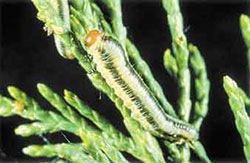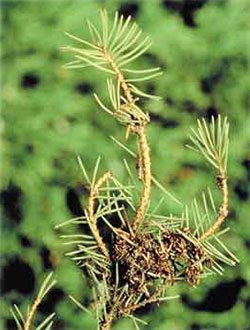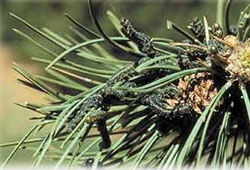What do sawflys eat?
 Caterpillar-like, sawfly larvae are common springtime pests. Several species feed on the old needles of evergreen trees in groups and can cause extensive defoliation in some years. The adult sawfly is a stingless wasp that causes no harm.
Caterpillar-like, sawfly larvae are common springtime pests. Several species feed on the old needles of evergreen trees in groups and can cause extensive defoliation in some years. The adult sawfly is a stingless wasp that causes no harm.
 Larvae typically feed for two to three weeks, primarily in early May. Sawfly larvae also may be found on Ponderosa pine in March, and on other pines later in the summer. Gardeners often observe feeding damage after the larvae have gone and the damage is done for the year.
Larvae typically feed for two to three weeks, primarily in early May. Sawfly larvae also may be found on Ponderosa pine in March, and on other pines later in the summer. Gardeners often observe feeding damage after the larvae have gone and the damage is done for the year.
Can sawflys harm trees?
Light populations may not cause serious damage, but moderate to heavy populations can significantly impact tree health. When sawfly larvae are present in high numbers, sprays are justified to protect tree health.
How can I control the sawfly population?
 To control sawfly larvae, spray infested evergreens with insecticides such as Orthene (acephate), permethrin or bifenthrin. Even though the larvae are caterpillar-like, the natural insecticide Bt, or Bacillus thuringiensis, isn’t effective because they are not true caterpillars.
To control sawfly larvae, spray infested evergreens with insecticides such as Orthene (acephate), permethrin or bifenthrin. Even though the larvae are caterpillar-like, the natural insecticide Bt, or Bacillus thuringiensis, isn’t effective because they are not true caterpillars.
Apply insecticides early, while sawfly larvae are young. Complete coverage is important for control. Spray ONLY the infested trees, but occasionally examine other trees for possible additional outbreaks. Sawflies are more prone to attack single landscape trees that are planted out in the open, rather than trees in a forest-like setting.



